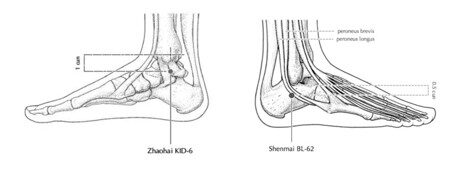The quality of your sleep may be more important than the quantity of your sleep.
The state of deep sleep—the stage of sleep characterized by slow brain waves—is crucial for physical and mental restoration, including muscle repair, immune system strengthening, and memory consolidation. Deep sleep allows your body and brain to repair. This is the state of sleep that helps you feel restored and well-rested.
Your circadian rhythm, your body’s internal clock, and the sleep hormone melatonin are pivotal in regulating your sleep-wake cycle and supporting deep sleep cycles. Supporting healthy circadian rhythms and natural melatonin levels may increase the duration and quality of your sleep and help with insomnia.
What is Deep Sleep?
Deep or slow-wave sleep is critical for physical restoration and recovery. During deep sleep, your body undergoes significant regenerative processes, including those necessary for proper brain function and memory.
Deep sleep supports detoxification of the brain as your lymphatic system—which facilitates the clearance of metabolic waste products from your brain—is active primarily during deeper sleep stages.
Similarly, growth hormone, which aids in cellular repair and regeneration and plays a pivotal role in tissue growth and muscle repair, is predominantly secreted during deep sleep. Immune function is also enhanced during deep sleep as the production of cytokines increases. These cytokines are crucial for fighting infections and inflammation, thus supporting the body’s natural defense mechanisms.
Benefits of Deep Sleep
Sleep—a restorative period during which the body can repair and rejuvenate itself— plays a critical role in physical healing.
- Physical Repair: Your body repairs tissues, builds bone and muscle, and strengthens your immune system. Deep sleep is essential for feeling rested and refreshed when you wake up.
- Hormone Regulation: The pituitary gland secretes human growth hormone during deep sleep, essential for tissue growth and repair.
- Energy: Energy stores are replenished during sleep, providing essential fuel for brain and body functions in the upcoming day.
- Learning and Memory: Deep sleep supports learning and memory consolidation. During deep sleep, memories are consolidated, and information is transferred from short-term to long-term storage, which helps reinforce declarative memory, or remembering facts.
- Immune Function: Deep sleep supports a healthy immune system.
- Brain Cleansing: The brain cleanses itself of metabolic waste products.
- Metabolic Health: The recovery of metabolic balance and the reduction of stress levels are significantly influenced by sleep.
- Brain Detox: Sleep facilitates the clearance of metabolic waste products from the brain via the lymphatic system, helping to support cognitive health and prevent dementia.
- Mental health: Sleep is crucial for brain restoration and emotional regulation and is fundamental to mental health. Sleep deprivation can lead to a wide range of mental health issues, including heightened levels of anxiety, depression, and paranoia.
- Emotional stability: Sleep may help support emotional regulation and help alleviate mood swings, impulsive behavior, and irritability.
Sleep Stages:
The sleep cycle is a physiological process that occurs during sleep. It allows the brain and body to perform “housekeeping” functions, such as repairing or growing tissues, removing toxins, and processing memories.
Each sleep cycle consists of four stages: three stages of non-rapid eye movement (non-REM) sleep—including light sleep and deep sleep (slow-wave sleep)—and one stage of rapid eye movement (REM) sleep, with each having varying effects on the body. On average, adults go through 4–6 sleep cycles per night and spend 90 minutes in each sleep cycle stage. Each cycle consists of:
Stage 1: A relatively short period when you shift from wakefulness to sleep. Your brain unwinds, along with your body. Brain waves slow down as brain activity and responses to sensory stimulation decrease. It is a period of light non-REM sleep where heart rate, breathing, eye movements, and brain waves slow, and muscles start to relax (and may occasionally twitch).
Stage 2: A period of deeper non-REM sleep as the body transitions to deeper sleep. Your muscles relax further, eye movements stop, brain waves slow, and body temperature drops. Most of your time during the sleep cycle is spent in stage 2 of sleep.
Stage 3: The deep sleep stage of non-REM sleep is characterized by slow brain waves (delta waves) and is the most challenging stage to wake from. It is crucial for physical restoration, including tissue repair, muscle growth, and immune system strengthening. During this stage, heart rate, breathing, and brain waves become regular, with brain waves becoming even slower and more significant.
Stage 4: REM sleep. The term “REM” refers to a person’s eye movements. During this stage, the eyes move quickly from side to side. During REM sleep, brain waves start to resemble brain waves of the wakeful state. The heart rate, blood pressure, and breathing rate speed up, and the rhythms may become more erratic or irregular. REM is the sleep stage most associated with vivid dreaming. You may experience muscle atonia, or temporary muscle paralysis, which occurs naturally during REM sleep and prevents a person from acting out their dreams.
How Melatonin Supports Deep Sleep
Melatonin is the key hormone that helps us fall asleep. It is typically released by the pineal gland in response to environmental light-dark cycles.
Melatonin may influence your sleep-wake cycle and your body’s internal clock, known as circadian rhythms. As its release is light sensitive, melatonin levels are low throughout the day and peak in the evening, telling us it is time to sleep.
The timing and levels of melatonin correlate with the different stages of sleep, suggesting that melatonin may increase the duration and quality of your sleep and may play a role in regulating the transition between different sleep stages.
Melatonin exerts a hypnotic (sleep-inducing) and sedative (anxiety-relieving) effect to support your body’s natural sleep-wake cycles. Melatonin has been shown to help promote healthy sleep patterns, reduce sleep latency (the amount of time needed to fall asleep), boost sleep efficiency (the percentage of time spent asleep), and increase total sleep duration.
Research on treatment with topically applied “exogenous” melatonin was found to have “positive effects on sleep quality” by “significantly reducing sleep disturbances and sleep latency while increasing sleep duration and quality” along with “improvements in subjective measures of daytime dysfunction.” The study found that “exogenous” (topically applied) melatonin, when administered at the appropriate time, seems to normalize circadian variation in human physiology.”
Melatonin is derived from the amino acid tryptophan (found in turkey and associated with fatigue) and the neurotransmitter, serotonin. Melatonin is fat soluble, allowing it to travel throughout your brain, diffuse into cells quickly, and protect against oxidative damage. That said, not all forms of melatonin can cross the blood-brain barrier. Essential oils and liposomal melatonin remedies (with super small molecules) continually prove more effective than melatonin consumed in pill form.
The effectiveness of essential oils in stimulating melatonin production could be due, in part, to the fact that melatonin is produced in plants and defends plant cells as an antioxidant. Melatonin serves a similar antioxidant function in humans and has been used to treat several health conditions and diseases, including insomnia, Alzheimer’s, and depression.
Essential Oils to Support Melatonin and Deep Sleep
Essential oils have been found to promote the production of melatonin, according to research on the effect of aromatherapy with lavender on serum melatonin levels. The study has shown that using aromatherapy with lavender oil can significantly improve melatonin levels in older people.
Topically applied essential oils can play a massive role in supporting the pineal gland in releasing melatonin naturally. They can be especially powerful in helping the brain as the brain is comprised primarily of fat, and essential oils are fat soluble, so they easily penetrate and assimilate into the system.
Circadian Rhythm® blend is designed to help you fall asleep, triggering the pineal gland in your brain to release the sleep hormone melatonin naturally to help you fall asleep. Your nose is a direct gateway to the brain and the pineal gland. To stimulate the olfactory passage to activate the pineal gland, inhale Circadian Rhythm® oil or apply topically on specific spots around the head—on the very top of the head, the back of the head, or the skin above the ears.
The pineal gland is located in the exact center of the brain, so topically applying oils directly around the brain allows transdermal access. Circadian Rhythm® blend can also help detoxify the pineal gland to enhance melatonin release with its numerous healing properties.
In addition to applying Circadian Rhythm® around the pineal gland, you can use acupuncture points on the legs for topical application.
Traditional Chinese medicine recognizes the connection between acupuncture and circadian rhythms, noting that acupuncture can influence factors regulating your internal clock.
A study published in the Journal of Sleep Research found that acupuncture can increase melatonin production and enhance sleep efficiency. It was specifically found to increase the duration of deep sleep—the most restorative sleep phase—allowing your body to repair and rejuvenate. By boosting melatonin levels, acupuncture may improve sleep quality and create a more aligned circadian rhythm.
Topically applying Circadian Rhythm® on the following acupuncture points may help balance deep sleep.
Kidney 6 (Zhaohai): Located on the inner side of the lower leg, directly below the inner ankle bone. Massage the depression between the Achilles tendon and the tibia (shin bone). This is known to improve sleep, alleviate insomnia, and reduce fatigue.
Bladder 62 (Shenmai), located on the foot, is believed to help with mental disorders, insomnia, and other conditions, potentially aiding sleep, according to the Journal of Acupuncture and Tuina Science [1].
Both Bladder 62 (outer ankle) and Kidney 6 (inner ankle) can be found by locating a tender depression about one inch underneath the tip of the ankle bone (malleolus). These points help you to become grounded, allowing you to fall asleep and stay asleep.
How to Massage:
Once located, topically apply a small amount of Circadian Rhythm® blend and massage points together by maintaining a firm but painless pressure using your fingertips. You can massage the two points on your ankles at the same time. Small circular motions may be applied if desired. Massage these points for up to 3 to 5 minutes before bedtime.





